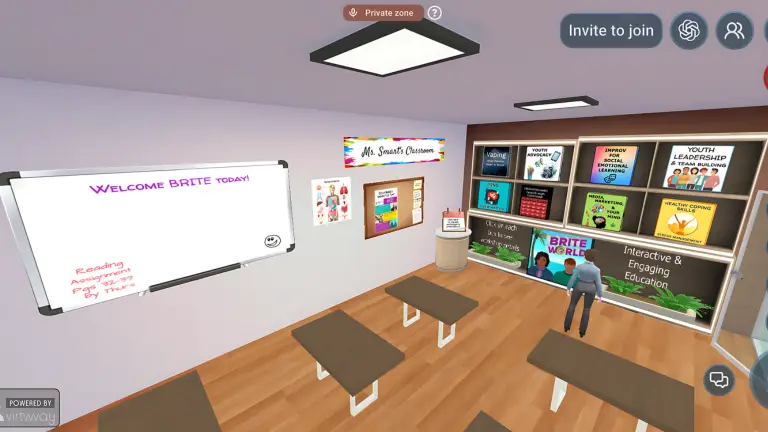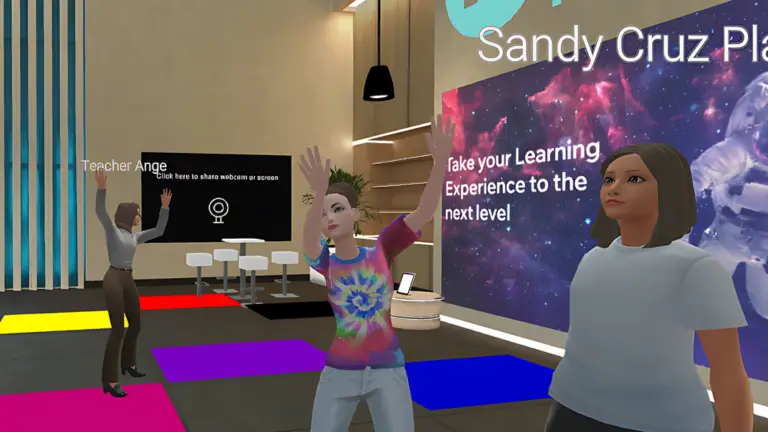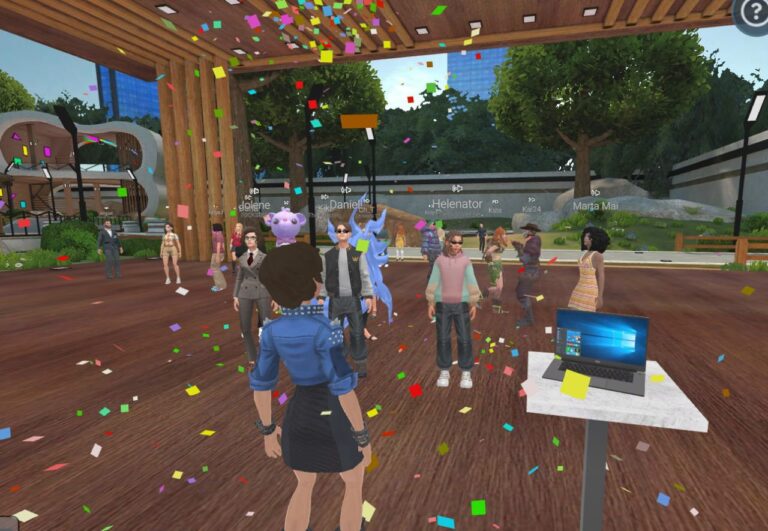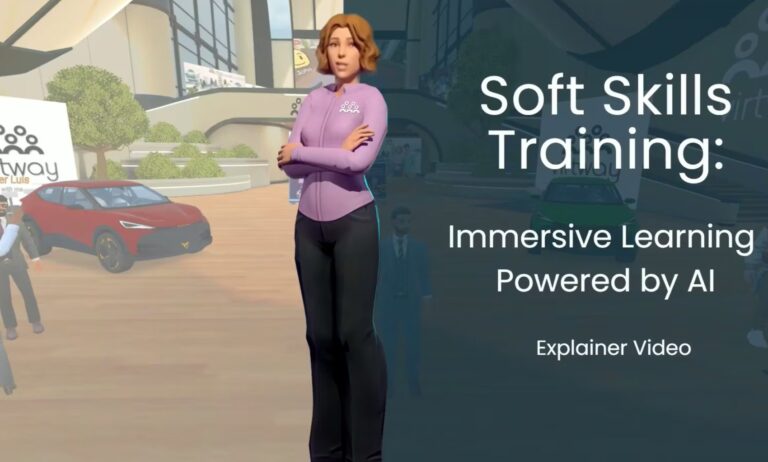As technology continues to reshape industries, education has not been left behind. The pandemic acted as a catalyst, pushing educational institutions to adopt online learning and remote engagement methods, leading to the rise of hybrid learning models. However, a new frontier has emerged that promises to take education even further—the tribrid model, which seamlessly integrates in-person, online, and immersive learning experiences. Let’s explore how this model, alongside innovations like virtual classrooms, AI and the metaverse, is transforming how we approach education.
What is the Tribrid Model?
The tribrid model represents the next evolution in education, moving beyond the two-way hybrid structure of physical and online classrooms by incorporating immersive virtual environments. This allows students to engage not only through traditional methods but also by stepping into immersive experiences. This integration helps unlock creativity, foster deeper engagement, and create more meaningful connections between learners and instructors.
The shift to a tribrid approach was accelerated by the global pandemic, where traditional methods became insufficient, and the need for remote learning became paramount. The tribrid model enhances traditional and online education with the addition of virtual worlds that offer real-time interactivity, simulations, and 3D visualizations. These experiences encourage a more collaborative and engaging learning environment that supports diverse learning styles and needs.
Virtual Classrooms and Immersive Learning Environments
Virtual classrooms have become a key component of the tribrid model, offering an interactive alternative to the one-way transmission of teaching which was frequently seen in early online education models. A virtual classroom is not just a static space but an environment where students and educators can communicate in real time, participate in interactive exercises, and access a broader range of resources.
Incorporating virtual learning environments takes this further by immersing students in virtual spaces and/or digital twins of real-world spaces. Imagine students exploring a historical site in the metaverse or conducting virtual chemistry experiments with lifelike realism—all from their home environments. This technology creates new opportunities for student engagement and creativity while broadening access to experiences that were previously limited by physical or financial constraints.

The Role of the Metaverse in Education
The metaverse offers exciting possibilities for education. It is essentially an interconnected virtual space where users can interact with each other and the environment, often through avatars and immersive technologies. Universities and learning institutions are already experimenting with metaverse-based platforms to offer more immersive, personalized learning experiences and commonly refer to their campus as “Metaversities“.
Students can “enter” these campuses as virtual avatars and participate in lectures, group discussions, and hands-on learning, all within a virtual space. Beyond lectures, the metaverse makes it possible for students to engage in simulations, explore career training modules, and interact with peers and faculty in ways that were previously unimaginable.
The educational potential of the metaverse extends well beyond convenience. It allows for a deeper level of personalization in learning, enabling students to work at their own pace, receive real-time feedback, and access virtual tools that make abstract concepts tangible. This experiential learning approach is paving the way for more dynamic and inclusive education.
Research shows that learning in the metaverse boosts student engagement and attendance. A study on higher education found that incorporating the metaverse fosters collaboration, increases interaction, and leads to higher attendance, with students participating more actively in virtual classrooms.
Implementing AI in Metaverse Learning
The union of metaverse technology and Artificial Intelligence (AI) is revolutionizing education. Beyond just automating processes, AI fosters a foundation for personalized, interactive learning. This evolution is not only about enhancing efficiencies but also about transforming educational strategies and methods.
AI-Powered Personal Assistants
- Guided Learning: AI personal assistants allow students to ask questions without the fear of judgment. This reduces the anxiety associated with making mistakes, encouraging more open inquiries and discussions.
- Step-by-Step Solutions: In subjects like math, AI provides not just answers but detailed explanations, fostering deeper understanding and building confidence in students.
Opening New Doors for Introverts
- Lowered Social Anxiety: The metaverse offers a less intimidating environment where introverted students can participate without the traditional pressures of physical classrooms. This can significantly reduce the barrier to engagement for shy students.
- After-Class Interaction: AI bots remain accessible in the metaverse outside of scheduled class times, providing a continuous learning opportunity. Students can revisit materials and interact with AI to reinforce learning at their own pace, in their comfort zone.
Enhanced Engagement and Retention
- Increased Participation: Studies have shown that engagement and attendance rates are higher in the metaverse. The immersive nature of the environment, combined with AI facilitation, encourages more students to attend and participate.
- Improved Knowledge Retention: The interactive, experience-based learning facilitated by AI in the metaverse helps students retain information more effectively than traditional lectures or reading materials. This is because they are actively involved in their learning process, making the concepts more memorable.
Challenges and Opportunities of Immersive Learning
While immersive learning environments hold great potential for revolutionizing education, they are not without their challenges. However, solutions are emerging to address these barriers, making immersive education more accessible and effective.
Addressing Cost and Accessibility
- Accessible Solutions: Unlike traditional immersive learning setups that often require expensive VR headsets, companies like Virtway are breaking down these barriers. Virtway offers immersive learning experiences accessible directly through a web browser, eliminating the need for costly hardware investments for each student. This makes immersive learning more feasible for institutions with limited budgets.
Overcoming Educator Resistance
- Teacher Fatigue and Curriculum Concerns: Many educators feel overwhelmed by the idea of integrating new technologies into their already packed curriculums. The concern is that immersive learning might detract from covering required content, leading to resistance from those who prioritize traditional teaching methods.
- The Experience Gap: Convincing educators of the benefits of immersive learning can be challenging without firsthand experience. Words, images, and videos often fall short in conveying the true value of immersive environments. Direct experience is usually necessary to appreciate the full potential and ease of integration into existing educational frameworks.
Demonstrating the Impact
- Empirical Evidence: Studies highlight the significant impact of immersive learning. For instance, a National Laboratory Study found that retention rates for lecture-style learning are as low as 5%, compared to 75% for learning in immersive experiences. This stark contrast underscores the effectiveness of engaging, hands-on educational approaches.
- Medical Training Success: In the field of medical training, immersive learning has shown remarkable results. Trainees who utilized immersive methods showed a 230% improvement in performance when first using real medical equipment. This statistic not only demonstrates the effectiveness of immersive training but also its potential to enhance professional readiness and confidence.
The journey toward widespread adoption of immersive learning in education is filled with challenges. However, with innovative solutions that reduce costs and accessibility barriers, along with clear empirical evidence of its benefits, immersive learning is poised to become a transformative force in education. Educators and institutions must now focus on overcoming resistance and embracing these new methods to fully realize their potential in shaping future learning environments.
Future Outlook for Innovations in Education and the Tribrid Model
The future of education is undoubtedly heading toward more immersive and interactive learning experiences. As the tribrid model continues to gain traction, we can expect a deeper integration of AI, MR, and immersive technologies into educational ecosystems. With these tools, institutions will be able to personalize education to fit each student’s needs, whether through real-world simulations or data-driven learning pathways.
Virtual classrooms and learning environments powered by the metaverse will enhance accessibility to higher education, particularly for students in remote areas or those unable to afford traditional university experiences. As this model grows, the tribrid approach will undoubtedly shape a future where learning becomes more inclusive, creative, and collaborative.
The possibility and potential to have this really transform learning is going to take all of us. It has to start in the pilot phases and make sure that we are helping to support educators as they get brave enough and want to try it and work with their students.
It’s clear that educators entered the profession driven by passion, yet many currently experience fatigue and frustration due to ongoing changes. While embracing innovation can be daunting, the necessity to evolve and improve is undeniable. As technology continues to advance, it offers new avenues to expand educational access and fundamentally alter our learning processes. We’ve been awaiting a catalyst for change, and with the integration of metaverse technology and AI, that moment has arrived. It’s crucial to prioritize education now and seize the opportunity to embrace transformative change.
We are in a new era of learning, marked by the powerful presence it enables. This shift requires a collaborative effort and innovative thinking. Educators, who inherently possess the capability to lead and innovate, are particularly well-placed to explore and shape these emerging pathways. Our role is to support and illuminate these new routes, highlighting the potential to not only expand access but also transform the educational landscape. The opportunity to build a different, more inclusive future in education is not just a possibility—it’s right before us, ready to be grasped.



